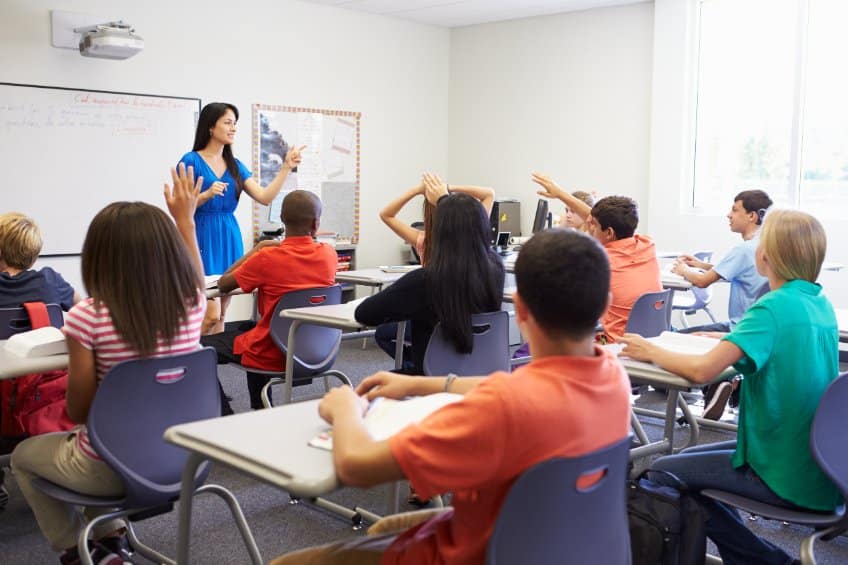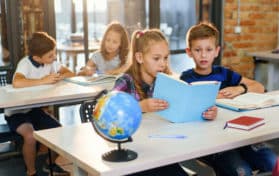
In 2020, American schools shut down and moved to online learning due to the worldwide COVID-19 pandemic. For many students, school was closed down for the summer after spring break; they simply didn’t go back until the new school year began. When the new school year rolled around, many schools across the nation returned – but only online. Some schools adopted a hybrid approach, where students were only attending schools on certain days each week. The rest of the week saw students participating in online learning. Some schools kept this in practice all year, while others attempted to go back to a regular schedule during spring 2021.
Fall 2021 saw schools preparing for a safe return to a traditional classroom. However, the Delta strain of the COVID-19 virus shut down some of those schools within weeks of returning. Across the country, K-12 schools provided a wide range of providing education – some returned to school in a traditional way, while others remained online or in a hybrid method.
Some students began homeschooling in 2020, and they never returned to the traditional classroom.
In 2022, most schools are striving to return to the traditional method of school, the on-campus classroom. However, students are returning with far fewer skills than if they had continued to go to school traditionally. The New York Times is reporting that national test results released this week show a devastating effect of school closures on the learning progress of children.
The test results are reported by the National Assessment of Educational progress, an organization that has annually tracked student progress since the 1970s. The NEAP reports for the first time in four decades, third graders fell behind in both math and reading scores. In fact, scores fell by the largest margin in twenty years.
The report indicates that race and socioeconomic status has no effect on the lack of progress; in fact, scores declined in most races and economic levels, particularly for those who students who have already established low-performing scores. These students, who have traditionally scored poorly on standardized tests, saw a twelve-point drop in their 2021-2022 scores.
Even traditionally high-scoring students showed some decline in their performance from the 2021-2022 school year. In fact, those in the 99th percentile still, on average, dropped three points in math scores from previous years’ test scores.
The comparison comes from nine-year-olds tested in early 2020, just before the pandemic shut down schools. The National Center for Educational Statistics administered the 2022 exam earlier this year; the commissioner of the agency, Peggy Carr, said, “I was taken aback by the scope and the magnitude of the decline.” The agency sent out 14,800 tests to nine-year-olds in order to measure any increases or declines in student learning.
Dr. Carr told The New York Times that “students at the bottom are dropping even faster.”
This report is only the latest evidence of the devastating effect of lockdowns on schoolchildren. Numerous surveys show that children showed “high levels of dissatisfaction with remote learning” as well as a lack of suitable help with both homework and learning resources. JAMA published a report which found that children and adolescents had experienced increased mental health issues as a result of the school closures. Not only did children report increased “distress and anxiety” but they also exhibited less physical activity and increased screen time. The report encompassed findings from 36 studies conducted in 11 countries.
Furthermore, the JAMA study concluded “the effectiveness of school closures as a standalone measure for reducing community transmission remains unclear.”
There is little, if any, evidence that school closures and the transition to online learning helped to prevent the transmission of COVID-19. This is particularly important as children tended to feel less severe effects of the illness. However, the decline in student progress due to the closures is staggering, with low-performing students falling even further behind in school.





